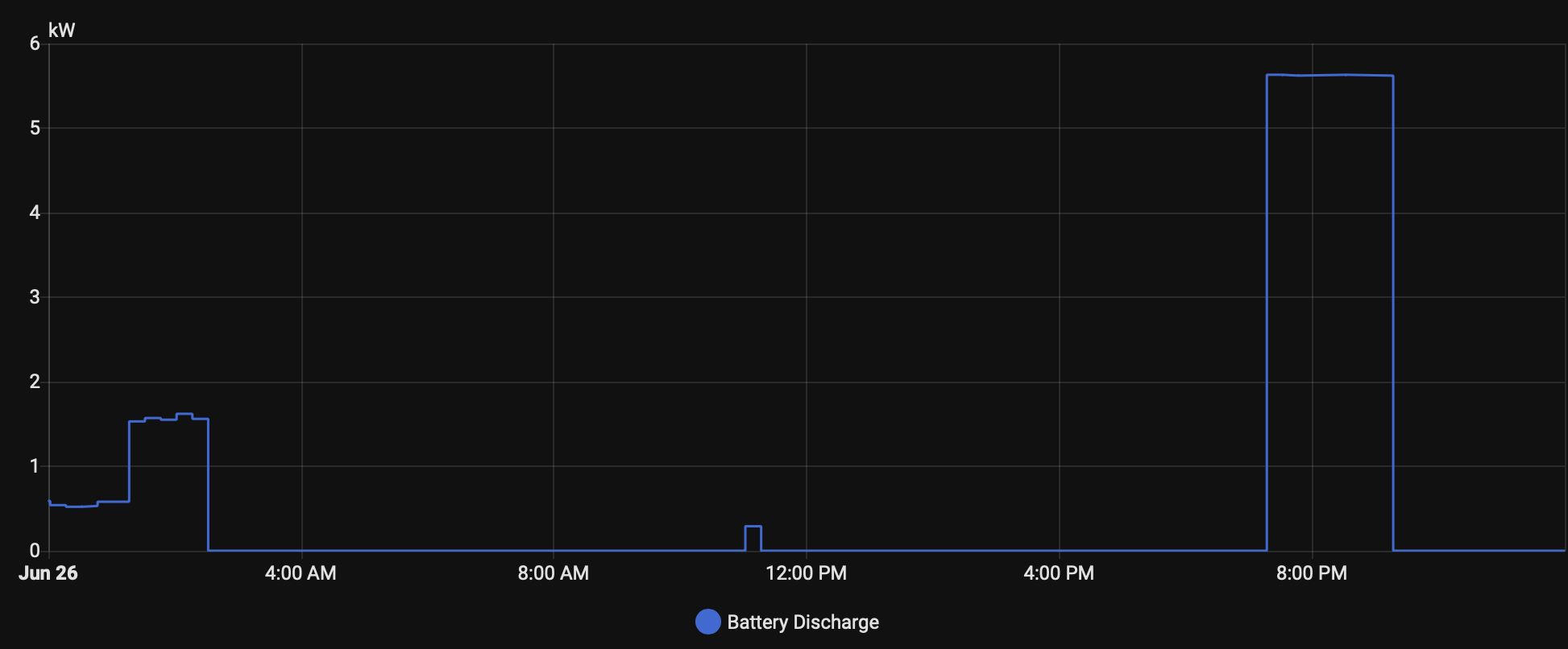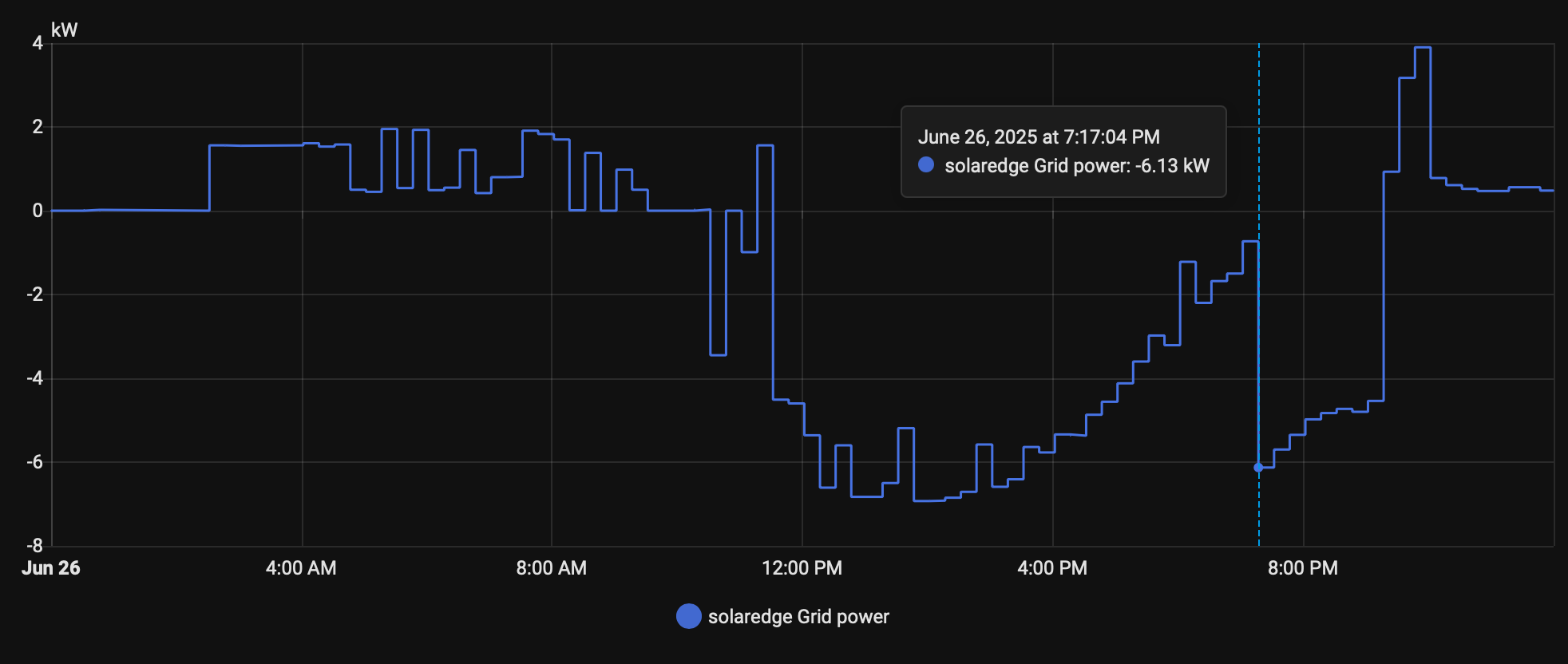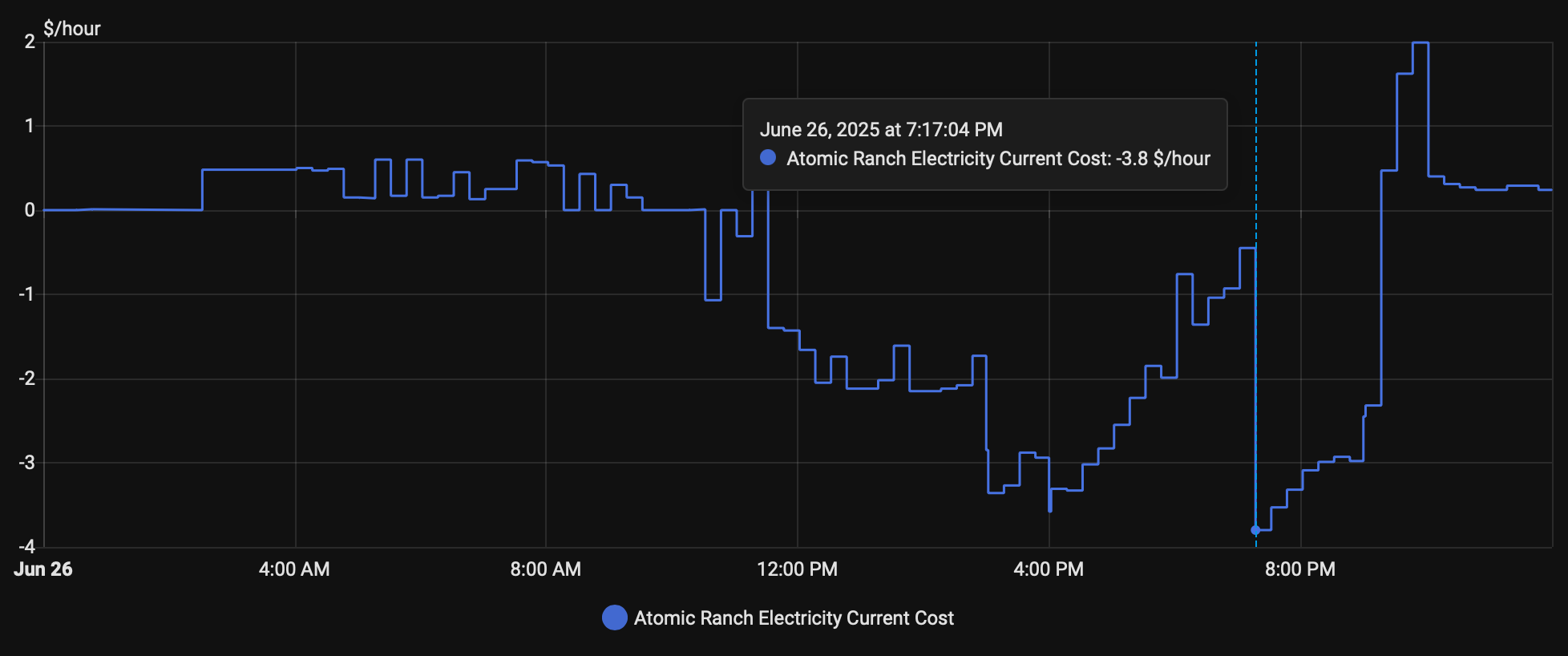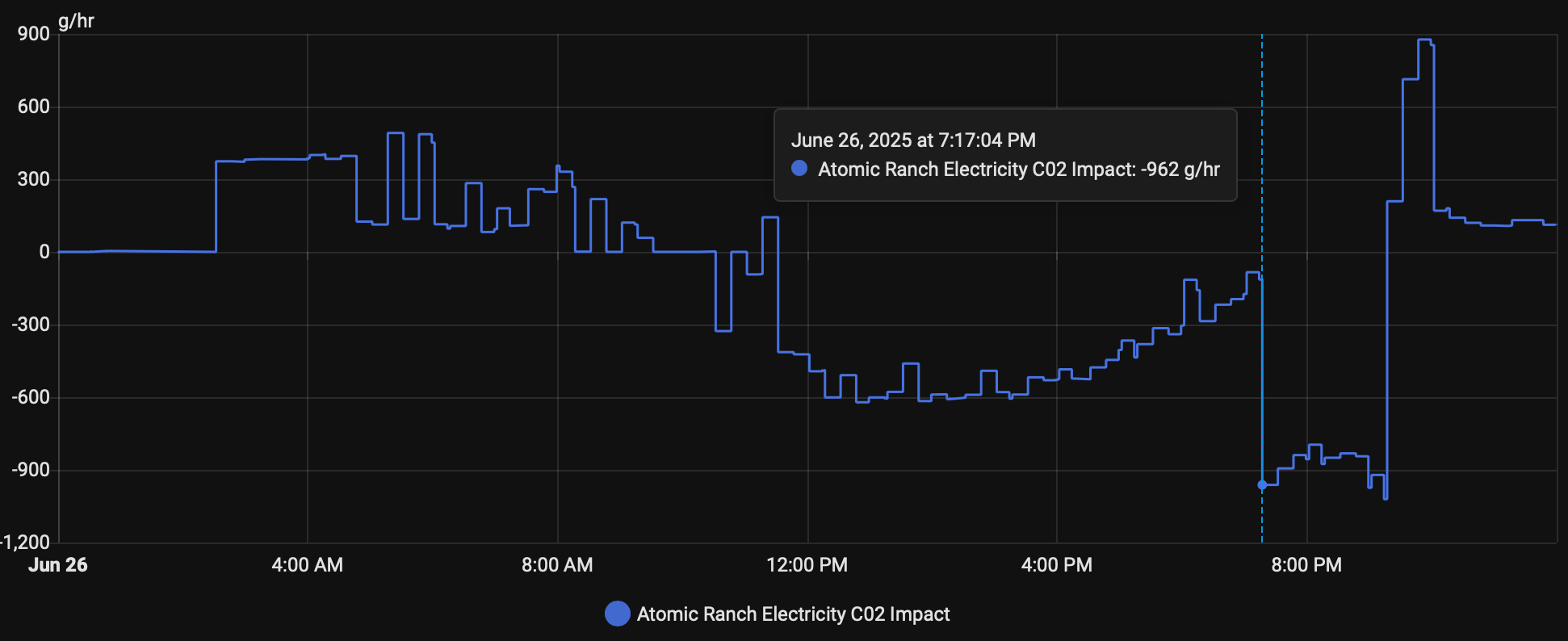SolarEdge-PG&E “DSGS” Program - First Impressions
I didn’t even notice it happened.

Earlier this spring I signed up for a couple of VPP trials here in the Bay Area, and subsequently wrote about my initial experience with the Span one. Now I’ve had the chance to experience my first SolarEdge “event”.
SolarEdge-PG&E DSGS event - What happened
DSGS, or Demand Side Grid Support, is a way for customers to provide backup generation or load reduction during critical grid events.
Last night my battery system dumped 11 kWh back out into the grid between the hours of 7-9pm and I didn’t even know it.

While I might have wanted to get a notification that this was happening, in reality it didn’t impact our living experience in any way, unlike the Span event. This seems like a much better way, customer experience wise, to handle demand events!
Likely grid impact
Looking at the net energy profile for my house, you can clearly see how the extra exports from 7-9pm are effectively extending energy exports into the head of the “duck curve” after the sun goes down and solar exports decline.

I don’t know how many households SolarEdge has signed up, but from Sunrun’s statements the collective action of many people’s home batteries can make a pretty big impact.
Cost considerations
But wait, isn’t the grid getting free use of my battery?
Not really - my solar system is on the legacy NEM2 net metering plan with EV2A tariff. What that means is that PG&E is crediting me at the retail electric rate of $0.62/kWh for that export, since it’s in the peak hourly range of 4-9pm. So, I earned almost $7 of credits. SolarEdge/PG&E are also paying $100 to participate for the season, across 35 events - so consider that another $2.85 - call it almost $10 total per event.

My battery system is an LG 16kWh system that’s good for 6,000 cycles, and if I assume a replacement battery is $6,000 (they’re selling online for under $3k, not including installation) that means my cost for them using my battery is about $1, not including the initial install costs which required running conduit, upgraded inverter, etc. On average, initially-installed battery systems run over $1,000/kWh1, which would put my battery system cost at around ~$16K, or ~$2.66 per cycle.
If I was on the current NBT metering rather than NEM2, my economics would be different - I haven’t looked into this much; they could actually be even better.
Environmental impact
It’s interesting to look at the likely C02 impact of exporting during these types of events. Using data from Electricity Maps combined with my home usage, I can plot my C02 impact over time -

Clearly this makes an outsized impact - likely because, at scale, it allows less use of inefficient gas peaker power plants.
SolarEdge-PG&E DSGS program - my conclusions
Participation in the program was virtually invisible to me from a customer experience program - which is great! And since it seems to have both economic and grid benefits it seems like a winner.
Do you participate in VPP or demand response plans? Share your thoughts below.
